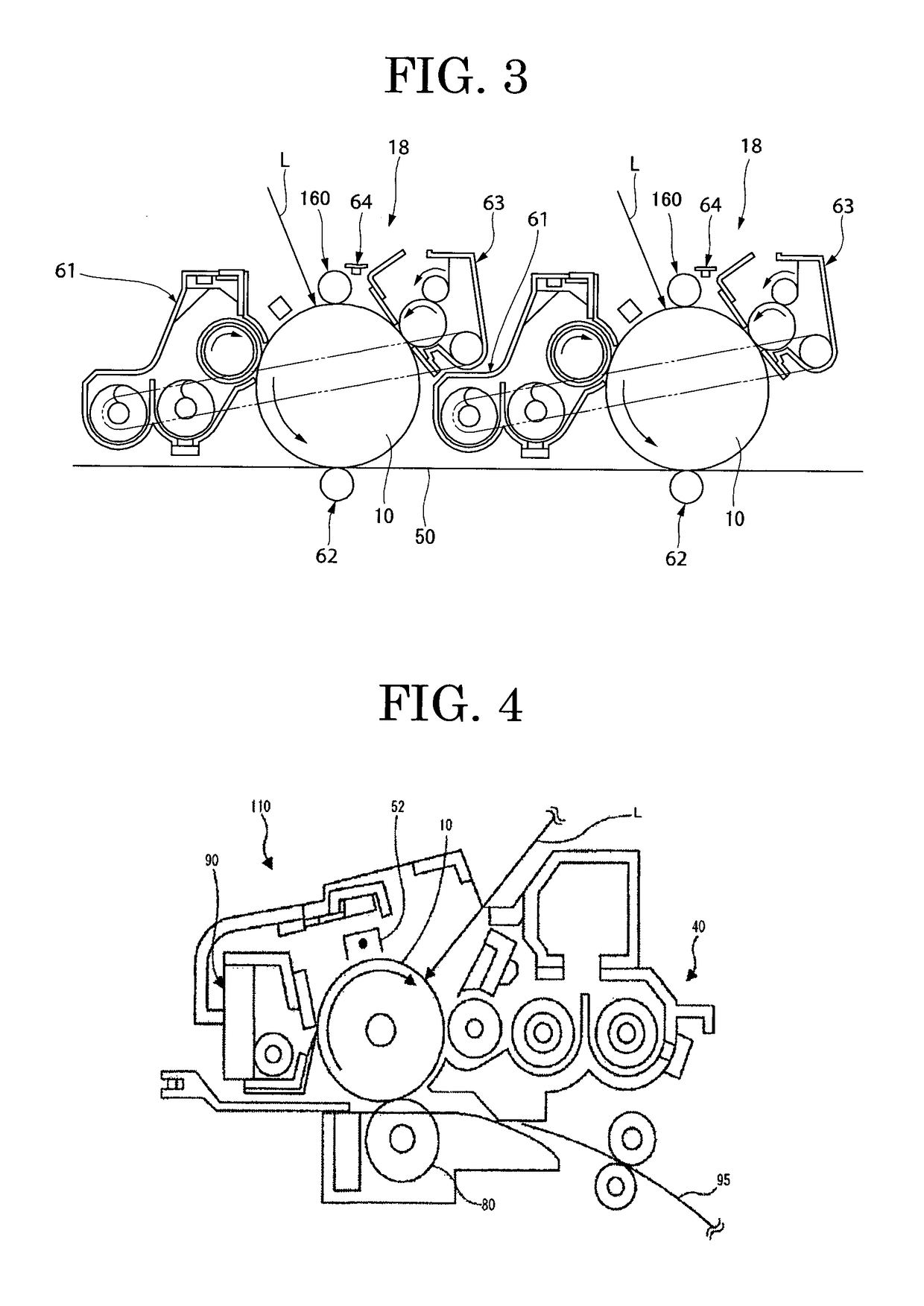Toner
a technology of toner and nozzle, which is applied in the field of dry toner, can solve the problems of large quantity of energy required for fixing such toner, unsatisfactory quality of output images, and inability to meet the characteristics of toner on the whole, and achieve the desired heat-resistant storage stability, prevent formation of white voids, and fix low temperature
- Summary
- Abstract
- Description
- Claims
- Application Information
AI Technical Summary
Benefits of technology
Problems solved by technology
Method used
Image
Examples
production example 1
[0331]A reaction vessel to which a stirring bar and a thermometer had been set was charged with 170 parts of isophorone diamine and 75 parts of methyl ethyl ketone, and the resulting mixture was allowed to react for 5 hours at 50° C., to thereby obtain [ketimine compound 1].
[0332]The [ketimine compound 1] was found to have an amine value of 418.
(Production of Non-Crystalline Polyester Resin A)
[0333]A reaction vessel equipped with a condenser, a stirrer and a nitrogen-introducing tube was charged with 97 mol % of 3-methyl-1,5-pentanediol and 3 mol % of trimethylolpropane (TMP) as alcohol components and 100 mol % of adipic acid as an acid component so that the molar ratio of OH / COOH was 1.1, together with titanium tetraisopropoxide (300 ppm relative to the resin component). Thereafter, the mixture was heated to 200° C. over about 4 hours, and heated to 230° C. over 2 hours, followed by carrying out a reaction until effluent water stopped. Thereafter, the resultant was allowed to furth...
example 1
[0348]Water (1,200 parts), 500 parts of carbon black (Printex 35, product of Evonik Degussa Japan Co., Ltd.) [DBP oil absorption amount=42 mL / 100 mg, pH=9.5], and 500 parts of the non-crystalline polyester resin B-1 were added and mixed together by means of HENSCHEL MIXER (product of NIPPON COLE & ENGINEERING CO., LTD.), and the resulting mixture was kneaded by means of a two roll mill for 30 minutes at 150° C. The resulting kneaded product was rolled out and cooled, followed by pulverizing by a pulverizer, to thereby obtain master batch 1.
[0349]A vessel to which a stirring bar and a thermometer had been set was charged with 300 parts of paraffin wax (HNP-9, product of Nippon Seiro Co., Ltd., hydrocarbon wax, melting point: 75° C.) as the releasing agent, 150 parts of a wax dispersing agent, and 1,800 parts of ethyl acetate, followed by heating to 80° C. with mixing. The temperature was maintained at 80° C. for 5 hours, followed by cooling to 30° C. over 1 hour. The resulting mixtur...
example 2
[0364][Toner 2] was obtained in the same manner as in Example 1 except that the non-crystalline polyester resin B-1 was changed to the non-crystalline polyester resin B-2.
PUM
| Property | Measurement | Unit |
|---|---|---|
| glass transition temperature | aaaaa | aaaaa |
| glass transition temperature | aaaaa | aaaaa |
| spin-spin relaxation time | aaaaa | aaaaa |
Abstract
Description
Claims
Application Information
 Login to View More
Login to View More - R&D
- Intellectual Property
- Life Sciences
- Materials
- Tech Scout
- Unparalleled Data Quality
- Higher Quality Content
- 60% Fewer Hallucinations
Browse by: Latest US Patents, China's latest patents, Technical Efficacy Thesaurus, Application Domain, Technology Topic, Popular Technical Reports.
© 2025 PatSnap. All rights reserved.Legal|Privacy policy|Modern Slavery Act Transparency Statement|Sitemap|About US| Contact US: help@patsnap.com



